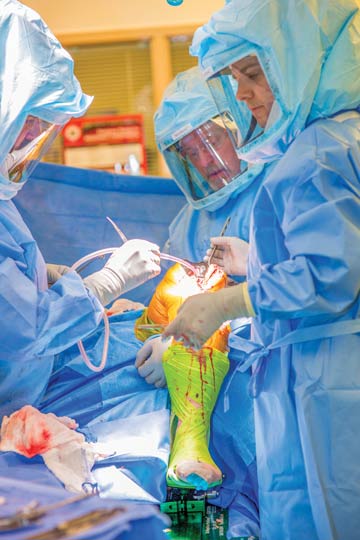An orthopedic attending got the ball rolling for us. "Listen, I believe that we can become the first academic medical center in New York City to implement a same-day hip replacement program," he told our facility's leadership team. That was in 2015, and we haven't looked back since.
Of course, we'd been preparing ourselves to move in that direction long before that attending made the official ask. For one thing, the constant changes in the rates at which insurance companies will reimburse facilities for inpatient total joint procedures made exploring the option of a same-day program a virtual necessity. We knew back when we started thinking about same-day discharge that Medicare would eventually remove total joints from the inpatient-only list, and we wanted to be ahead of the curve when they did.
Plus, there are the metrics. Research shows that when hip and knee patients are discharged same-day, they tend to be more satisfied, and less prone to infection and readmission.
All in all, a successful same-day joints program offers an opportunity to both give patients better surgical outcomes and post-op recoveries. Since rolling out our same-day total joints program in 2015, we've achieved a 94% same-day discharge success rate for procedures that normally require a 2-to-3 night stay (total hips) or a 3-to-4 night stay (total knees). Plus, only 1% of our same-day patients are readmitted, and they outperform non-same-day patients in each of the 11 Hospital Consumer Assessment of Healthcare Providers and Systems (HCAHPS) benchmarks.
If you're considering implementing a same-day joints program at your facility, here's what you should know.
Get the key players involved early
We can't overstate the role your physician-champion plays in the process, but you need to get buy-in from all of your key players right from the get-go. We knew early on that the success of our same-day joints program, pardon the pun, hinged on a lot of different disciplines working together as seamlessly as possible. On top of our surgeons, nurses and anesthesiologists, pre-admission testing and acute services departments played a critical part for us. We mapped out everything everyone does — day in and day out and in as much detail as possible — to ensure staff understood the processes, workflow and protocols for each and every patient we identified as a same-day discharge.
But with so many people involved, it's easy for things to slip through the cracks or for redundant messages to cause confusion or, worse, delay things from getting done on schedule.
Our solution? Appointing a dedicated coordinator to oversee the clinical management of the program and to ensure communication reaches all care team members. Plus, we created an interdisciplinary workgroup to give everybody from clinical (surgeons, nurses, OT/PT) and administrative staff (security, patient registration, patient experience) timely, consistent and, most importantly, relevant updates on same-day workflow, patient education materials and process changes — like the opioid-sparing protocol we piloted on our same-day patients.
.svg?sfvrsn=be606e78_3)

.svg?sfvrsn=56b2f850_5)